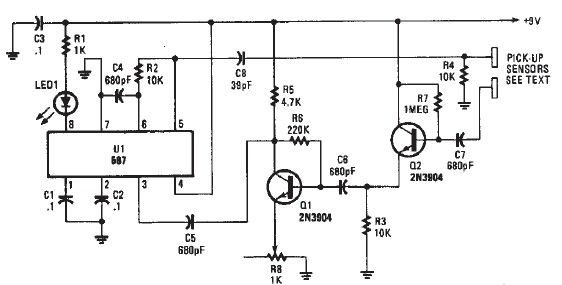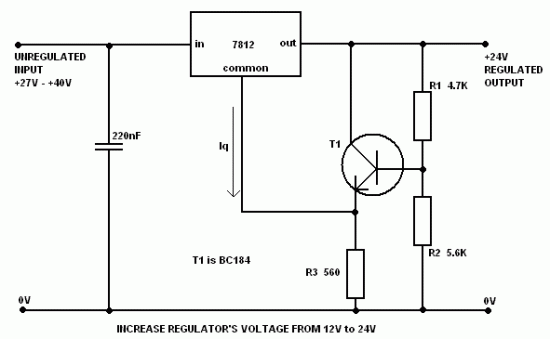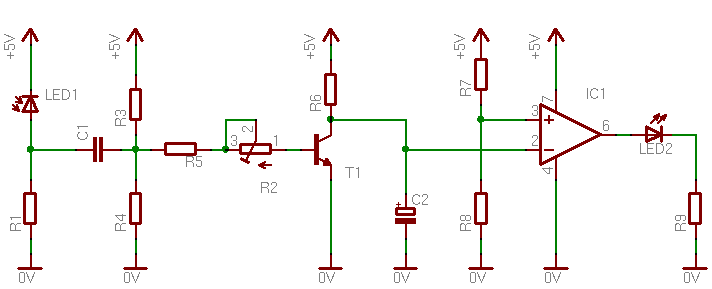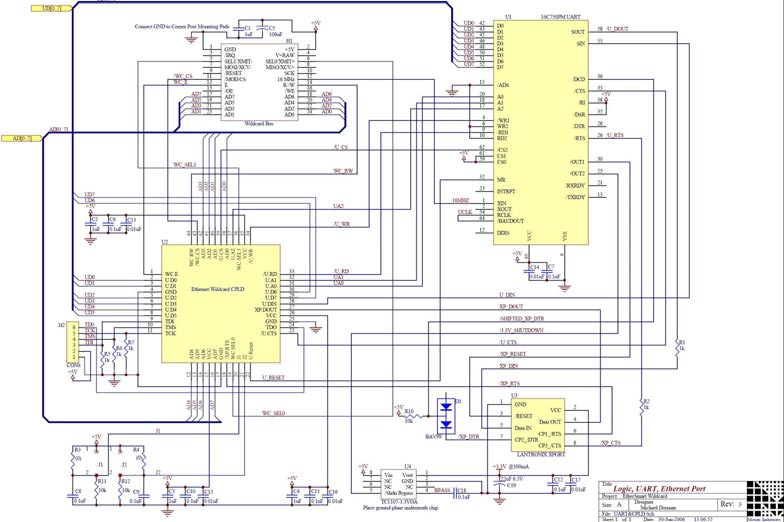
Proximity detector schematic

A simple proximity detector electronic project can be designed using this schematic circuit. This project utilizes a tone decoder integrated circuit (NE567) that provides a signal with a frequency of approximately 100 kHz. When an object is placed near the sensor, the capacitance between the sensor increases. The Q1 and Q2 transistors amplify the signal and feed it to the NE567 IC, which causes LED1 to glow.
The proximity detector circuit operates by leveraging the NE567 tone decoder, which is pivotal in detecting frequency shifts caused by changes in capacitance. The circuit is initiated when an object approaches the sensor, resulting in an increase in capacitance due to the proximity of the object. This change in capacitance alters the frequency of the signal detected by the NE567.
The NE567 is configured to respond specifically to a 100 kHz tone, which is generated by an oscillator circuit integrated within the device. The presence of an object modifies the capacitance, effectively shifting the frequency of the signal. The Q1 and Q2 transistors, configured in a common-emitter arrangement, serve as amplifiers to boost the output signal from the NE567. This amplification is crucial for ensuring that the signal is strong enough to activate the subsequent components of the circuit.
LED1 acts as a visual indicator, illuminating when the NE567 detects the appropriate frequency shift, confirming the presence of an object within the sensing range. The circuit may also include additional components such as resistors and capacitors to stabilize the operation of the transistors and the NE567, ensuring reliable performance in various environmental conditions.
Overall, this proximity detector circuit is a straightforward implementation of electronic principles, providing a practical solution for applications requiring object detection without physical contact. Its simplicity and effectiveness make it suitable for educational purposes as well as potential integration into various electronic systems.A very simple proximity detector electronic project can be designed using this schematic circuit. This proximity detector electronic project use a tone decoder integrated circuit ( NE567 ) that will provides a signal with a frequency about 100Khz. When an object is placed near the sensor, the capacitance between sensor is increased. The Q1 and Q2 transistors will amplify the signal and fed it to the NE567 IC, that will make the LED1 to glow. 🔗 External reference
The proximity detector circuit operates by leveraging the NE567 tone decoder, which is pivotal in detecting frequency shifts caused by changes in capacitance. The circuit is initiated when an object approaches the sensor, resulting in an increase in capacitance due to the proximity of the object. This change in capacitance alters the frequency of the signal detected by the NE567.
The NE567 is configured to respond specifically to a 100 kHz tone, which is generated by an oscillator circuit integrated within the device. The presence of an object modifies the capacitance, effectively shifting the frequency of the signal. The Q1 and Q2 transistors, configured in a common-emitter arrangement, serve as amplifiers to boost the output signal from the NE567. This amplification is crucial for ensuring that the signal is strong enough to activate the subsequent components of the circuit.
LED1 acts as a visual indicator, illuminating when the NE567 detects the appropriate frequency shift, confirming the presence of an object within the sensing range. The circuit may also include additional components such as resistors and capacitors to stabilize the operation of the transistors and the NE567, ensuring reliable performance in various environmental conditions.
Overall, this proximity detector circuit is a straightforward implementation of electronic principles, providing a practical solution for applications requiring object detection without physical contact. Its simplicity and effectiveness make it suitable for educational purposes as well as potential integration into various electronic systems.A very simple proximity detector electronic project can be designed using this schematic circuit. This proximity detector electronic project use a tone decoder integrated circuit ( NE567 ) that will provides a signal with a frequency about 100Khz. When an object is placed near the sensor, the capacitance between sensor is increased. The Q1 and Q2 transistors will amplify the signal and fed it to the NE567 IC, that will make the LED1 to glow. 🔗 External reference





